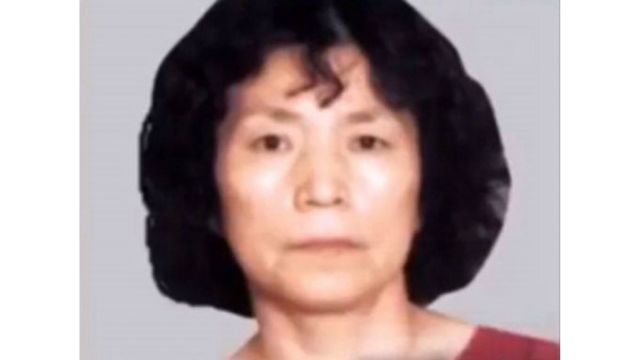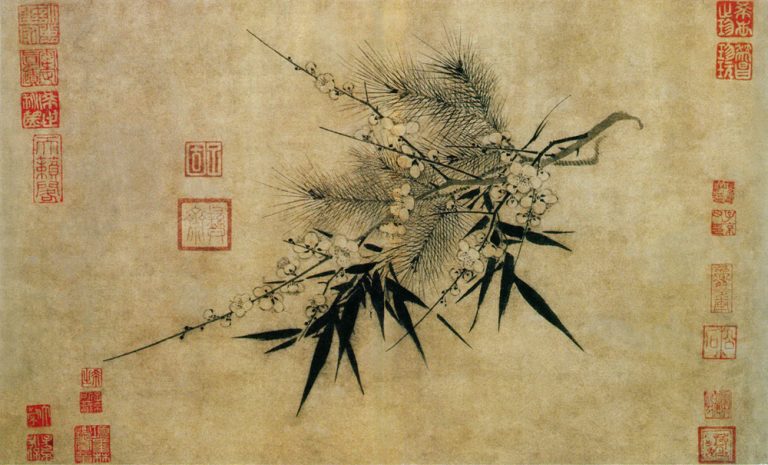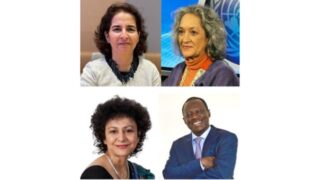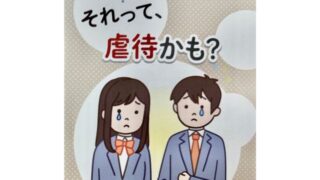In its December 2023 issue, the Japanese conservative magazine “Seiron” published an important special issue on the threatened dissolution of the Unification Church. “Bitter Winter” offers its serialized translation.
by Makiko Takita
Article 1 of 6.


A conversation with Reverend Haruhisa Nakagawa, President of Japan Christian Theological Instituted and Secretary of Tokyo Christian Theological Institute, and Professor Tsutomu Nishioka, from the Ethics and Moral Education Foundation,
Professor at the Institute of Moral Science, Tokyo Christian University.
Nishioka was born in 1956. He graduated from International Christian University and completed a master’s degree in East Asian Studies at the Graduate School of Area Studies, University of Tsukuba. He is the chairman of the National Council for the Rescue of Japanese Kidnapped by North Korea and of the Society for the Dissemination of Historical Facts. Nakagawa was born in Niigata Prefecture in 1970. After graduating from Waseda University, he became a pastor of the Lord’s Sheep Christian Church in 2007. He is also a member of the editorial board of “SALTY,” a Christian website.
Nakagawa: “The Agency for Cultural Affairs has filed a request with the Tokyo District Court for a dissolution order against the Family Federation for World Peace and Unification (Unification Church). As a Christian pastor, I have followed the government’s actions up to this point, and I find them very problematic. When the government requests a dissolution order, it is usually difficult to imagine a situation where the dissolution order is not granted. But that is usually the case only when the request is based on the right motive and the right argument, which does not apply to this case of the Family Federation for World Peace and Unification. As the Swiss Catholic theologian Hans Küng said, ‘A half-truth is a half-lie.’ What I am acutely aware of is that behind what is being brought to light, there is something that is being hidden. There is another half-truth, the part that is not revealed at all and is not visible to us, and it seems to me that everyone is only seeing one side of this truth. For example, the request for dissolution uses a lot of evidence, court documents, and findings gathered by the National Network of Lawyers Against Spiritual Sales (hereinafter ‘National Federation of Bar Association’). Some may say, ‘The evidence is true, so there is no problem about who supplied it,’ but it is almost as if the government is endorsing and relying on the claims and information of a private organization that has long been hostile and antagonistic to the Family Federation for World Peace and Unification. This is highly questionable in terms of the neutrality of the procedure.”
Nishioka: “I was horrified. I don’t even know how the circumstances led to the point of the request for dissolution of the Family Federation in the first place. The Unification Church had been subject to various criticisms for quite some time. But the government, through the Ministry of Education, Culture, Sports, Science, and Technology (MEXT), had previously consistently and repeatedly said it could not request an order to dissolve the Unification Church [because the Family Federation had never been accused or convicted of criminal acts or violations of the Penal Code.] The cabinet of Prime Minister Fumio Kishida also originally adopted this position on October 14, 2022. A part of this story is that in 2012, the National Federation of Bar Associations filed a lawsuit against the MEXT, claiming that the MEXT was acting illegally when it failed to request a dissolution order for the Unification Church. But the Tokyo District Court dismissed that lawsuit in 2017. Despite this precedent, the Kishida cabinet eventually approved and submitted the request for dissolution. This is because on October 19, 2022, only five days after the cabinet decision not to seek dissolution, Prime Minister Kishida changed his position overnight about the legal grounds for dissolution. He said that instead of basing dissolution solely on criminal acts and criminal law violations, torts under Article 709 of the Civil Code could also be considered. This is what has led to the current situation. I was horrified at that time as well. What events or circumstances had occurred that necessitated the dissolution of the Unification Church as a religious organization? Was there a new case of unforgivable damage that came to light? I have no idea what happened to cause the request of dissolution of the church. This is a criminal trial. The only thing that has happened is that former Prime Minister Shinzo Abe was murdered by an assassin. The mother of the person who assassinated Abe happened to be a member of the Unification Church, and the assassin had developed a grudge against the Unification Church. However, this story about a grudge is not something that came out at a press conference; it is a story that was leaked unilaterally by the Nara Prefectural Police and quickly spread through the media. Since this leak, attacks on the Unification Church have grown and continue to this day. However, it seems that the donation from his mother, which the assassin said he had a grudge against, was made a long time ago, and he is now an adult. As an adult, he has his own life and finances, so it is none of his business what his parents did with their money. And the story that the assassin thought that Abe was close to the church is also not persuasive.”


Nakagawa: “That’s right.”
Nishioka: “Abe and the Unification Church were not really close, were they?”
Nakagawa: “That’s right. The [anti-cult] journalist Eight Suzuki has been trying hard to argue that Abe was ‘in bed’ with the Unification Church, but based on my observation, I don’t believe that to be true.”
Nishioka: “The video message Abe provided to the Universal Peace Federation (UPF) has been mentioned as evidence that he was ‘close’ to the Unification Church, but if you read the full message he gave, there is not even a single mention of the church.”
Nakagawa: “Yes, that’s correct. In the message, there was only a diplomatic remark saying thank you to Hak Ja Han Moon, who is the leader of the Family Federation [and also co-founder of the UPF]. Besides, the UPF is an NGO with general consultative status with the UN Economic and Social Council. There are more than 6,000 UN NGOs, but only 412 have general consultative status. In addition, former U.S. President Donald Trump and former U.S. Secretary of State Mike Pompeo also sent similar messages. It is thus not surprising that Abe sent a message as well.”
Nishioka: “Yes. Suzuki also claimed that Abe received 50 million yen for submitting the video message.”
Nakagawa: “His logic was that former President Donald Trump was paid 100 million yen for his video, so Abe should have been paid half of that, 50 million yen. Suzuki said he had solid proof of this, but for the time being he has been sued by UPF for making a false claim. Both Abe’s staff and the UPF have denied that Abe was paid for his video. Suzuki also claims that Abe called on Eiji Tokuno, then president of the Unification Church, to visit his home in early June 2016. This too is based on information only Suzuki has seen. He wrote on his blog on July 12, 2022, ‘I would like to ask you all a favor. I am the only one who can speak with clear arguments about the close relationship between the Unification Church and former Prime Minister Shinzo Abe. Please follow my account and retweet my tweets. And please increase my visibility.’”
Nishioka: “But of all this no evidence has been supplied, isn’t it? After the fatal shooting of former Prime Minister Abe, the ‘Asahi’ newspaper stated in an editorial that Abe was ‘advertising’ the Unification Church. Those who oppose Abe have been trying to gear the conversation to make the Unification Church and Abe look as close as possible. I also think it is problematic that the government is acting to fulfill the wishes of the assassin by requesting the dissolution order.”
Nakagawa: “Regarding the topic of Prime Minister Kishida suddenly changing his standards for dissolution, I would say it does not make sense in light of the legal principle of non-retroactivity of the law.”
Nishioka: “There is more. The Religious Corporations Council, [which reviewed the government’s dissolution request before it was sent to the Tokyo District Court], is composed of many religious representatives. There was a Protestant pastor whom I knew well and the former chairman of the board of trustees of the university where I used to work. There were also the general secretary of the Christian Church of Japan and others from Shintoism and Buddhism. It is unbelievable and shocking that all of these people agreed to this [dissolution request] without any objection. What on earth do they think about freedom of religion? I am a Christian. I believe that God created heaven and earth and all things, and that Jesus Christ was born of the Virgin Mary. I also believe that Jesus Christ died on the cross but rose from the dead three days later. These beliefs may appear strange to most Japanese. Therefore, I am also a member of a religious minority. But even so, freedom of religion is allowed. It should be the same for the Unification Church. To clarify, I am firmly against their doctrine. ‘Sankei News’ reported the story with the title, ‘The Agency for Cultural Affairs requests a dissolution order: Limitations to the investigation.’ In reality, the Religious Corporations Council had members who were dissatisfied with the government’s stance towards the Unification Church. However, the Agency for Cultural Affairs intervened by claiming that the Kishida cabinet would be in trouble [if the Religious Corporations Council members opposed the government’s request]. But that is what I think is wrong. I heard that Agency for Cultural Affairs officials went to the homes of the Religious Corporations Council members, persuaded them to go along with the government, and then, one by one, holed them up while keeping it a secret. When I hear these stories, I am in a state of intense fear and disbelief.”
Nishioka: “In the past, three religious corporations were involved in criminal cases, and although requests for dissolution orders were filed, the dissolution orders were denied. They are Nenpo Shinkyo, Hoyu-no-kai, and Sekai Kyusei-kyo. In 1961, Nenpo Shinkyo became a problem when its founder indecently assaulted and raped many female believers, deceived believers into donating money, and forced sick believers to perform painful practices that resulted in their deaths. In 1990, Hoyu-no-kai’s founder and seven followers assaulted and drowned believers on a beach under the guise of making them do penance. In 1968, executives of Sekai Kyusei-kyo administered psychic therapy to believers and caused their deaths, and two directors were arrested on bribery charges. These cases were criminal cases involving the founders and other executives of the groups. If it was clear to everyone that the Unification Church had done ‘worse’ things than a rape case by the founder, deaths caused by psychic therapy, and drownings to make believers repent, it would be understandable that the dissolution standard would need to be changed. But I see no such circumstances of criminal behavior in the Unification Church. Another case happened in 1995, when a former member of Shinji Shumeikai assaulted and killed six people in what he claimed was an act of prayer to exorcize evil spirits. This case is called the Fukushima Exorcism Murder Case. Since the incident was committed by a former believer, the relationship with the religious organization is unclear. But there have been other cases of deaths by physical assault by believers, such as the Kigenkai case in 2007, in which several believers conspired to assault and kill another group of devotees over an internal dispute, and the case of another group in 2012, when nine believers assaulted a group of devotees and killed them over a dispute about the doctrine of the church. Both of these cases are serious criminal incidents, but the government did not request the dissolution of the groups. How does the case of the Unification Church and these cases fit together in terms of equality? Are they equal under the law? Frankly speaking, I have my doubts.”


Nakagawa: “The media coverage is all about supporting the dissolution order request. Some media outlets even ask, ‘Why only now?’ meaning, ‘Why has it taken so long to arrive at this point?’”
Nishioka:“Yes. I have only looked at the major newspapers, but none of them has reported the situation from the perspectives I have just described, such as freedom of religion and equality under the law. There are just two precedents of dissolution: Aum Shinrikyo and the Myokaku-ji Temple; the latter was dissolved due to the fraudulent sale of exorcisms. After the Aum dissolution request was sent to the court, it took seven months for it to be decided. The dissolution process lasted about four years for the Myokaku-ji Temple. Yet, these cases rarely enter the present discussion. What Reverend Nakagawa said at the beginning of this conversation is exactly right—the other half of the story, the invisible part, is not being shown at all, and everyone is only looking at one side of the story.”







